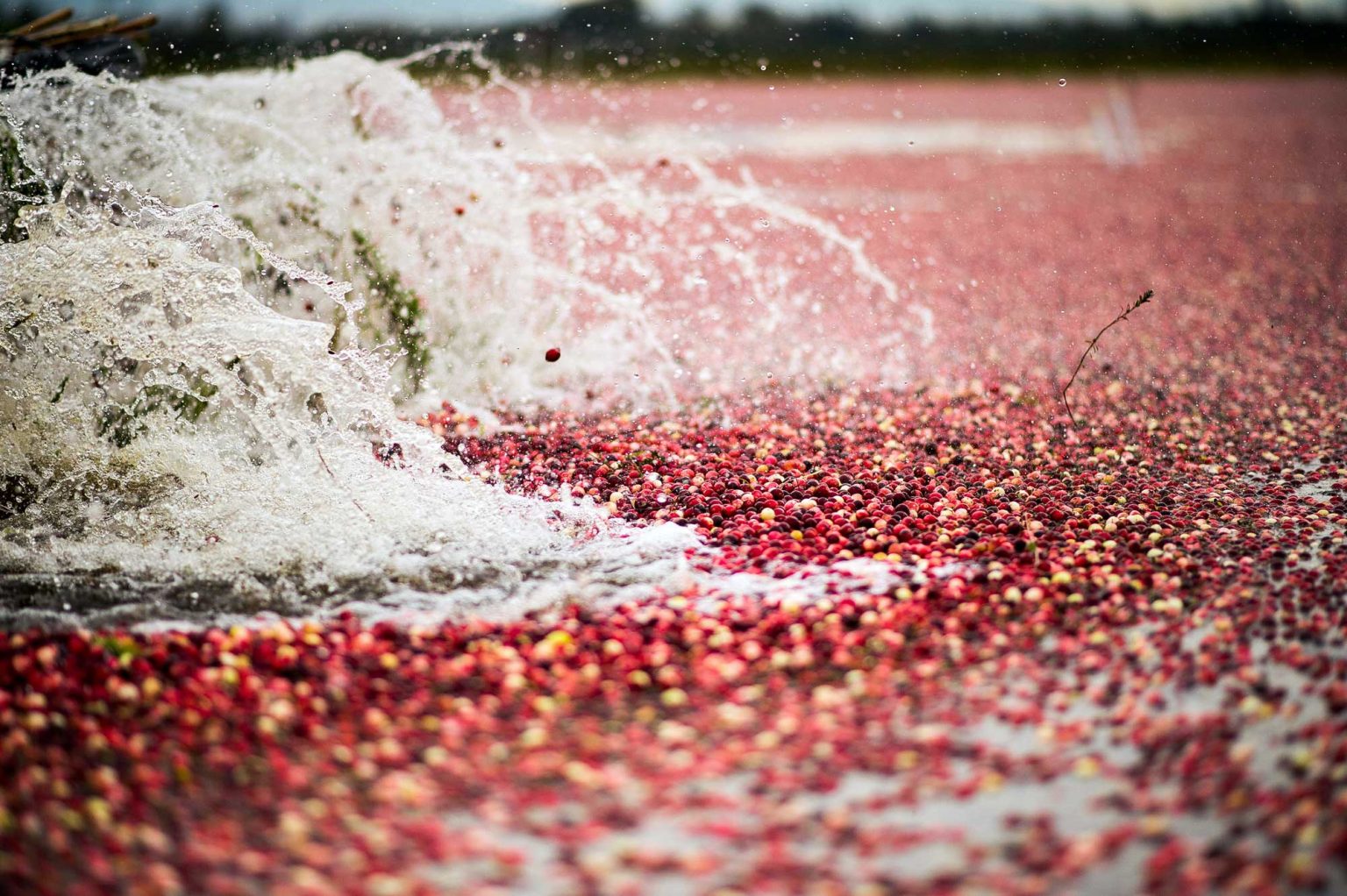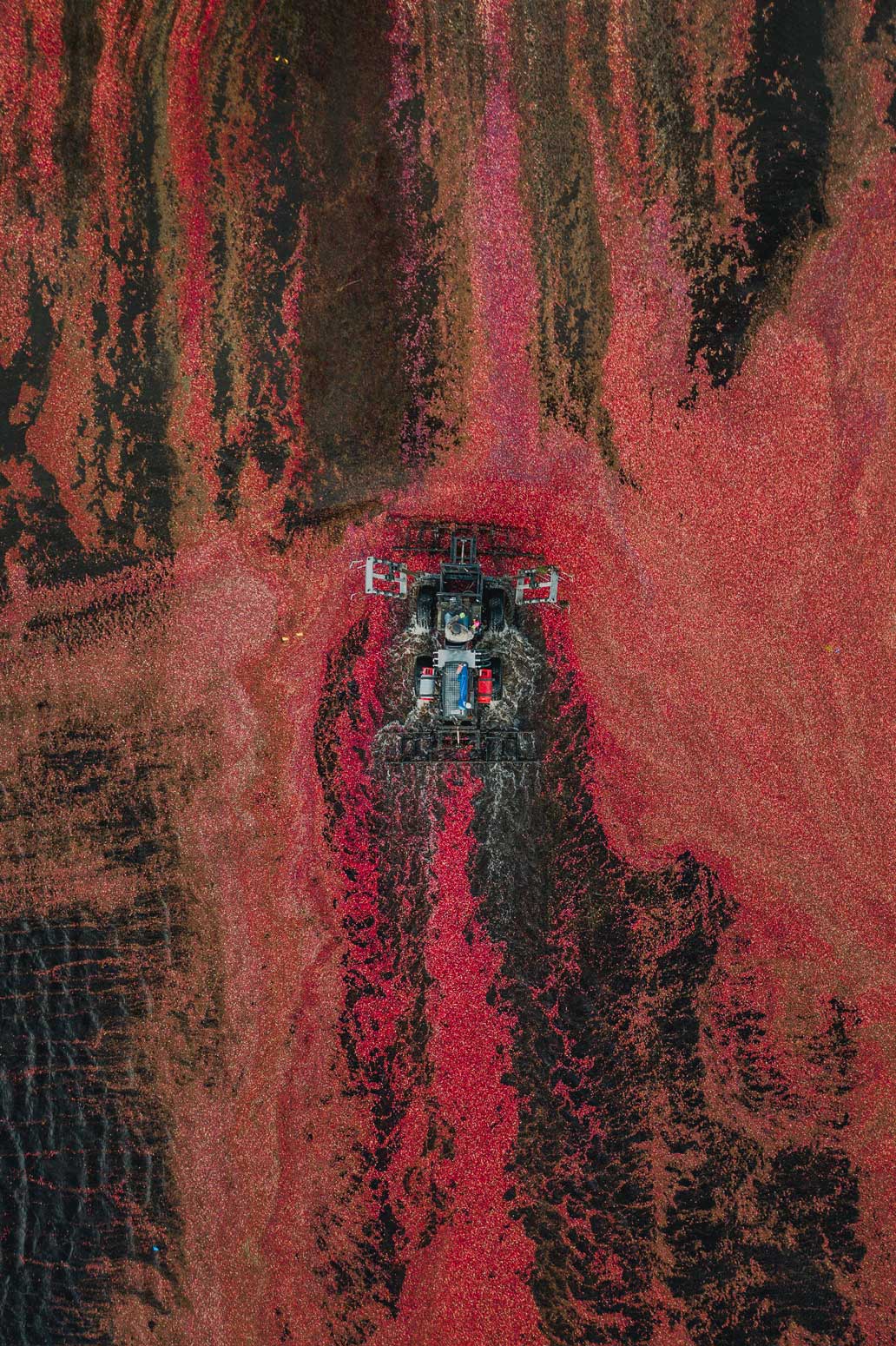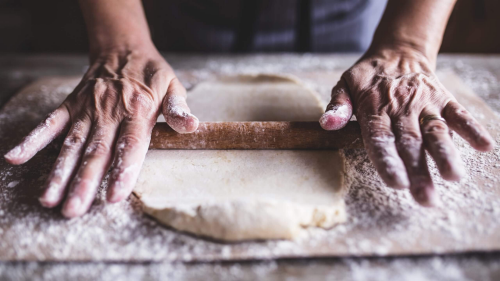
I was in elementary school the first time I visited a cranberry bog. Although my home state of Pennsylvania isn’t a huge cranberry producer, we do have wetlands where wild cranberries grow. We also have one of the Nature Conservancy’s first Pennsylvania nature preserves almost right in our backyard.
On a misty school morning, a bus carried me and 20 of my classmates to Tannersville Cranberry Bog Preserve. There aren’t tons of cranberries to be harvested here, but the knowledge I gained has lasted a lifetime. From the history of the cranberry and its unique habitat to harvest techniques, I realized the cranberry is far more fascinating than the subtle wiggle of the jellied mass that comes out of a can.


A NATIVE STAPLE
The first time I ever tried a fresh cranberry, I was shocked by its tart flavor. As a kid, I couldn’t imagine cooking with this sour food. But Native Americans have used these berries as a staple in drinks, food, and medicine for centuries. One way they used them was to combine cranberries, mashed and dried meat or fish, and rendered animal fat. They would form the mixture into small cakes and let them bake in the sun, providing the tribe with a rich energy source that lasted for months and could be easily taken on treks. Native Americans are also credited with making the first cranberry sauce, which they often ate with meats or used as dessert.
"I realized the cranberry is far more fascinating than the subtle wiggle of the jellied mass that comes out of a can."
CRANBERRY CULTIVATION BEGINS
My ears perked up when our tour guide described how cranberry cultivation began in 1816. Captain Henry Hall, who fought in the Revolutionary War, discovered that his wild cranberries grew faster and the plants were more productive when sand blew in the wind over the plants. He started transplanting vines and spreading sand over them, starting a trend that caught on quickly. By 1927, cranberry harvesting was such an important part of local economies in bog-friendly locations like Massachusetts, that kids my age (at the time) or younger were often let out of school during harvest season to work in the bogs.



CRANBERRIES REQUIRE SPECIFIC GROWING CONDITIONS
At the cranberry bog, I learned about how cranberries grow best. Even the wild fruit needs specific growing conditions to flourish, including acidic peat soil and an abundant supply of fresh water. Farmers grow the vines in beds that contain clay, peat, gravel, and sand. They’re often located near wetlands, ponds, or other bodies of water, but they aren’t grown in areas flooded with water. That comes later.
HARVESTING IN HIP WADERS
Harvest season usually runs from the middle of September through the middle of November. There are dry harvesting methods, but it’s the wet harvest that I’ve always thought would be the most fun. The night before harvesting the berries, farmers flood the bog with 18 or so inches of water. They use special reels that they call eggbeaters to loosen the berries, letting them float to the top of the water’s surface so the harvesters can gather them.

IT'S A FAMILY AFFAIR
Part of what I love so much about the cranberry is its enduring connection to small family farms. The average cranberry farm is handed down for more than two generations.
As an adult, I’ve found many uses for cranberries that extend far beyond a holiday dinner. Smoothies, salsas, desserts, and more — cranberries are shockingly versatile. While I’m shopping for cranberries, I often think about taking a drive to nearby farms in Cape Cod to reinforce the respect I gained for this flavorful berry at an early age and to share it with my friends who might not yet understand the wonder of the cranberry.
I try to work in a little cranberry knowledge every time I serve a dish containing these berries. From my famous cranberry salsa to my cranberry cake, I love serving dishes that wow my friends and family with the unexpected sweet-tart combination of cranberries. From my first visit to the cranberry bog when I was young, I’ve had an unexpected appreciation for the dynamic little fruit.



Related Articles
-
 Food & Drink March 16, 2020 | 5 min read Going Rogue in the Kitchen Eventually, I did what most people do when they’re feeling confident in the kitchen. I whipped up a pot of homemade soup without any instructions.
Food & Drink March 16, 2020 | 5 min read Going Rogue in the Kitchen Eventually, I did what most people do when they’re feeling confident in the kitchen. I whipped up a pot of homemade soup without any instructions. -
 Food & Drink March 16, 2020 | 6 min read Delicious Differences: Potatoes Mashed potatoes. Fried potatoes. Hash browns. Baked potatoes. The list goes on for all the ways you can prepare potatoes in the kitchen.
Food & Drink March 16, 2020 | 6 min read Delicious Differences: Potatoes Mashed potatoes. Fried potatoes. Hash browns. Baked potatoes. The list goes on for all the ways you can prepare potatoes in the kitchen. -
 Food & Drink June 11, 2020 | 6 min read Food Traditions Family traditions don’t always have rhyme or reason, but they give us something to look forward to, and remind us to be grateful.
Food & Drink June 11, 2020 | 6 min read Food Traditions Family traditions don’t always have rhyme or reason, but they give us something to look forward to, and remind us to be grateful.